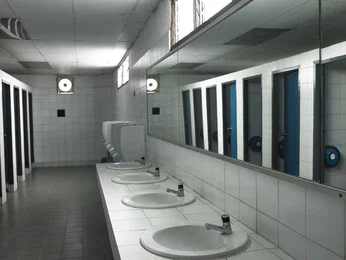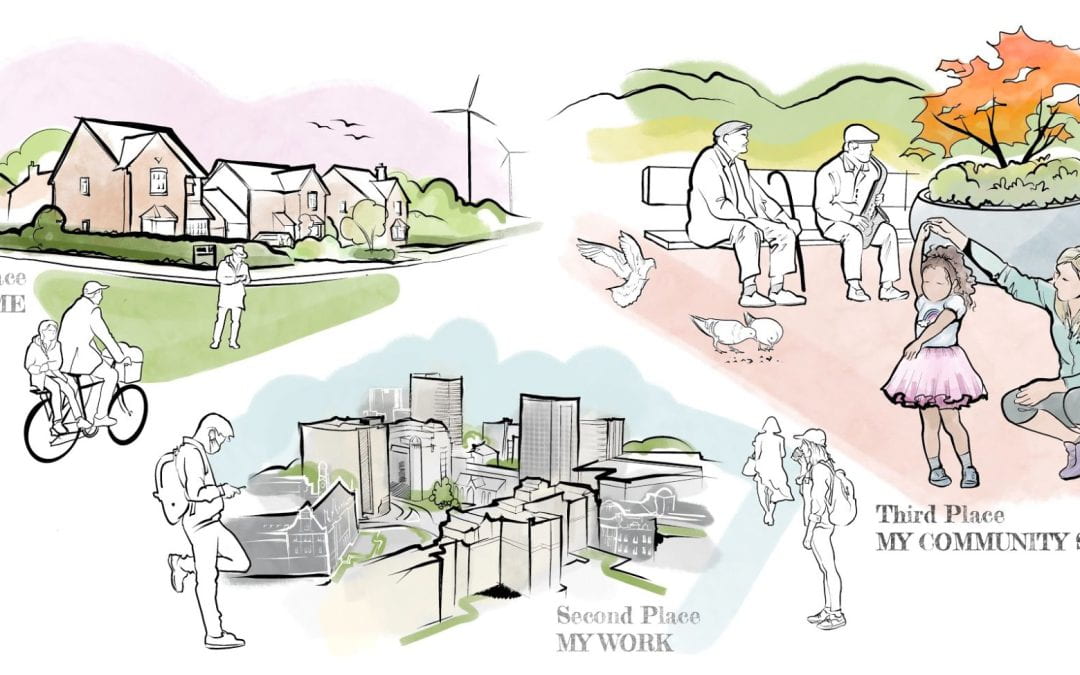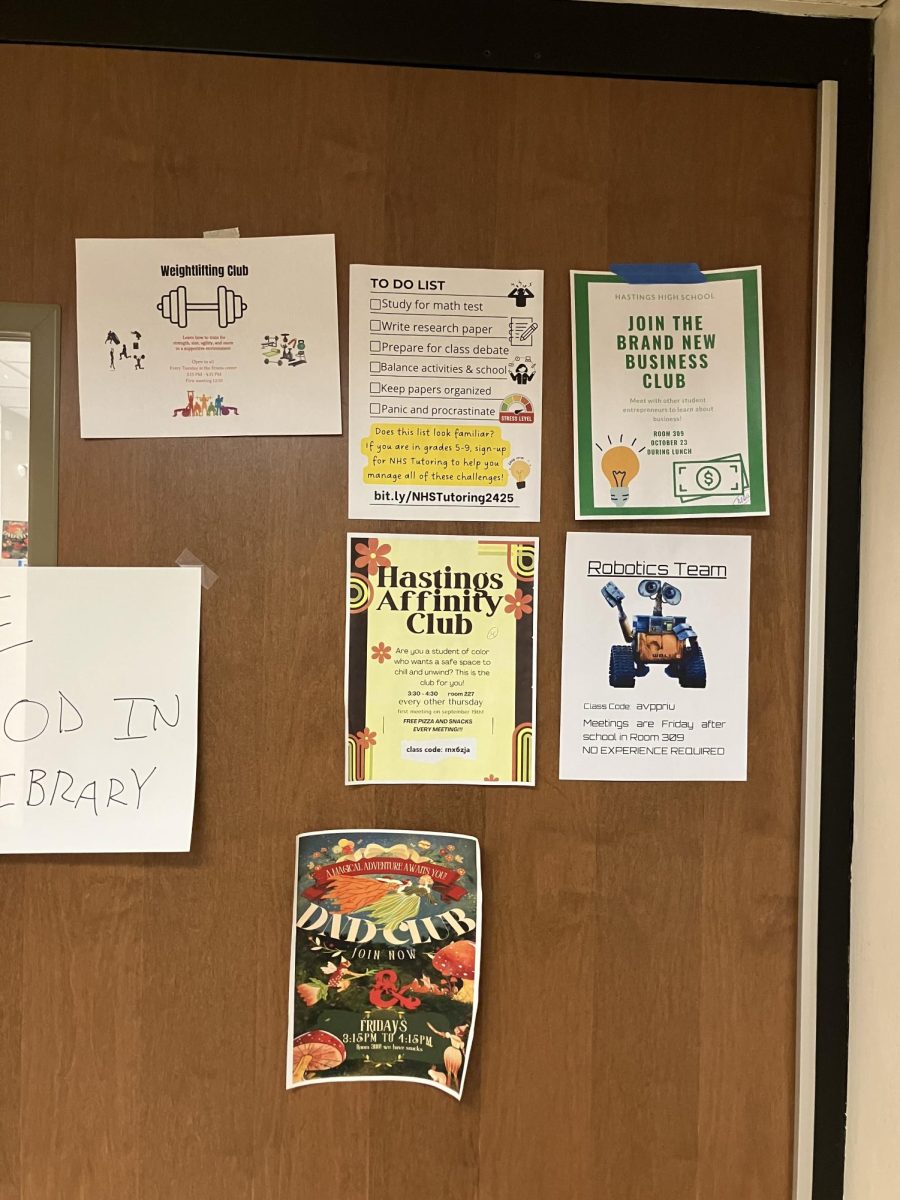“Lockdown, lockdown,” the stern, eerie recording repeats over the school’s loudspeaker.
Students, who were warned about the drill ahead of time, move to a corner, out of sight of the classroom door, and sit on the floor. The teacher turns the lights off and covers the windows before joining them. Everyone is silent. Some play on their phones, while others read books or complete homework. After about 20 minutes, an administrator unlocks the door and declares the drill is over.
The experience is not out of the ordinary for the students. They have engaged in lockdown drills since kindergarten. About 95% of K-12 public schools nationwide use lockdown drills to prepare students for a live-shooter situation. Since 2016, New York has required every school to conduct at least four drills a year, in which hallways are cleared, doors are locked or barricaded, and students and staff “hide from view, and remain silent while readying a plan of evacuation as a last resort,” according to the New York State government website.
A survey of 132 Hastings High School (HHS) students conducted by The Buzzer found most give the school high marks for safety. Over 85% of respondents gave the school either a four or five out of five.
In interviews, however, students expressed a range of opinions on the effectiveness of the drills, including concerns and doubts. Meanwhile, due to a lack of research, there is no consensus among experts that the drills make students safer. A federal government report on the subject is set to be released this summer.
“They are as effective as they can be,” HHS senior Tyler Levan said. “But realistically, in times of actual danger, it is very hard to be rational and orderly. It is hard to prepare for the intensity and fear that a real intruder situation would evoke.”
HHS sophomore Hazel Kuniholm said the fact the drills are conducted so often means students and staff do not always follow procedures as carefully as needed.
“We have lockdowns so frequently that they aren’t really treated like a serious situation,” Kuniholm said.
Last year, the New York State Board of Regents issued new rules that bar the use of methods that make the drills seem true to life. The new rules also require that staff and students be notified in advance of a drill, and that drills be conducted “in a trauma-informed, developmentally and age-appropriate manner.”
Another HHS student, who asked to remain anonymous, said telling students about the drills in advance undercuts their effectiveness.
“Although it alleviates any anxiety that a student may experience, it doesn’t foster a realistic experience in terms of knowing how to act in a stressful situation, which defeats the purpose of a drill,” the student explained.
But another HHS student noted that drills could go wrong if conducted without a warning.
“It freaks me out when they don’t warn us or the teacher,” the student said, referring to drills done before the new regulations. “Once, I had a [substitute teacher] who had no idea what was going on, and the entire class thought it was real.”
Maureen Caraballo, the treasurer and business official for the Hastings School District, said the drills aim to focus on “creating muscle memory,” so that students and staff are more likely to respond effectively should an active-shooter situation arise. The district works with a private security firm, Altaris Consulting Group, to ensure it is following state regulations and best practices.
There is also an emphasis on protecting students’ mental health. The drills aim “to prepare, not to scare,” said Frank Chibbaro, the district’s safety and security coordinator.
“Our teachers and mental health support folks are critical members of our district-wide security team,” Chibbaro added. “They are there to represent the student voice.”
The administration also works on ensuring that staff are attentive to students upset by lockdown drills, especially younger students, according to Chibbaro.
Justin Heinze, the co-director of the National Center for School Safety at the University of Michigan, said that, because of a lack of useful data, most of the current research does not focus on the effectiveness of drills, but rather on whether they make students feel more prepared, or create fear.
“It’s important to start answering the efficacy question,” acknowledged Heinze, a member of an expert committee created by the United States Department of Education and the National Academies of Sciences to probe the effectiveness issue. The panel is scheduled to release a report this summer.
Efforts to address the question to date appear to offer contrasting results. A few studies found evidence that lockdown drills, through repetition, may make students better at taking the steps that might keep them safer during a real-life shooter event.
A 2023 study published in the Journal of School Violence suggests that practicing lockdown drills can improve readiness. It found that over a four-year period, there was improvement in how well classrooms perform in a lockdown, which includes turning off lights, remaining out of sight from potential intruders, and not opening the door. The study also found that schools that went through a shooter incident and implemented lockdown policies had 59% fewer casualties.
“Among multiple possible harm-reduction strategies,” the report concluded, “lockdowns were the most consistent and significant protective factor in reducing casualties.”
But other studies have been less positive. One, published in the Journal of Adolescent Health in 2020, found that over 60% of youth participants in the research reported feeling “unsafe, scared, helpless, or sad” after a lockdown drill.
Pauline Moore, the lead researcher on a 2023 RAND Corporation study of lockdown drills, told Education Week that the drills are “not really making [teachers] feel more prepared or safer to the extent that we might hope, given their frequency and their ubiquity at schools across the country.”
According to Caraballo, much of the Hastings School District’s efforts aim to avert campus gun violence by boosting mental health resources and stationing security guards at entrances.
Caraballo asked, “How do we prevent tragedies, rather than react to them?”
This story resulted from a mentorship program between professional and student journalists facilitated by the Rivertowns Dispatch, which also published this story.



















